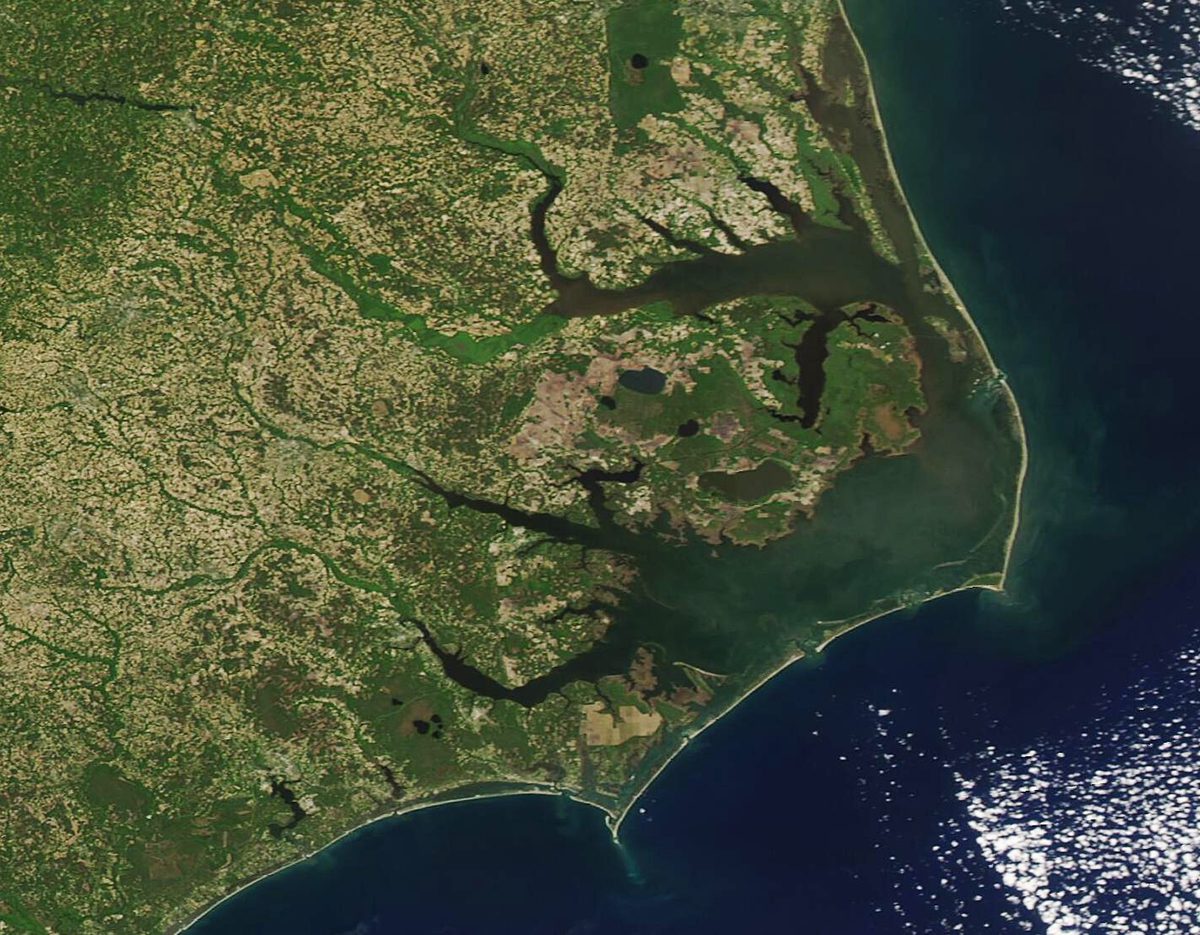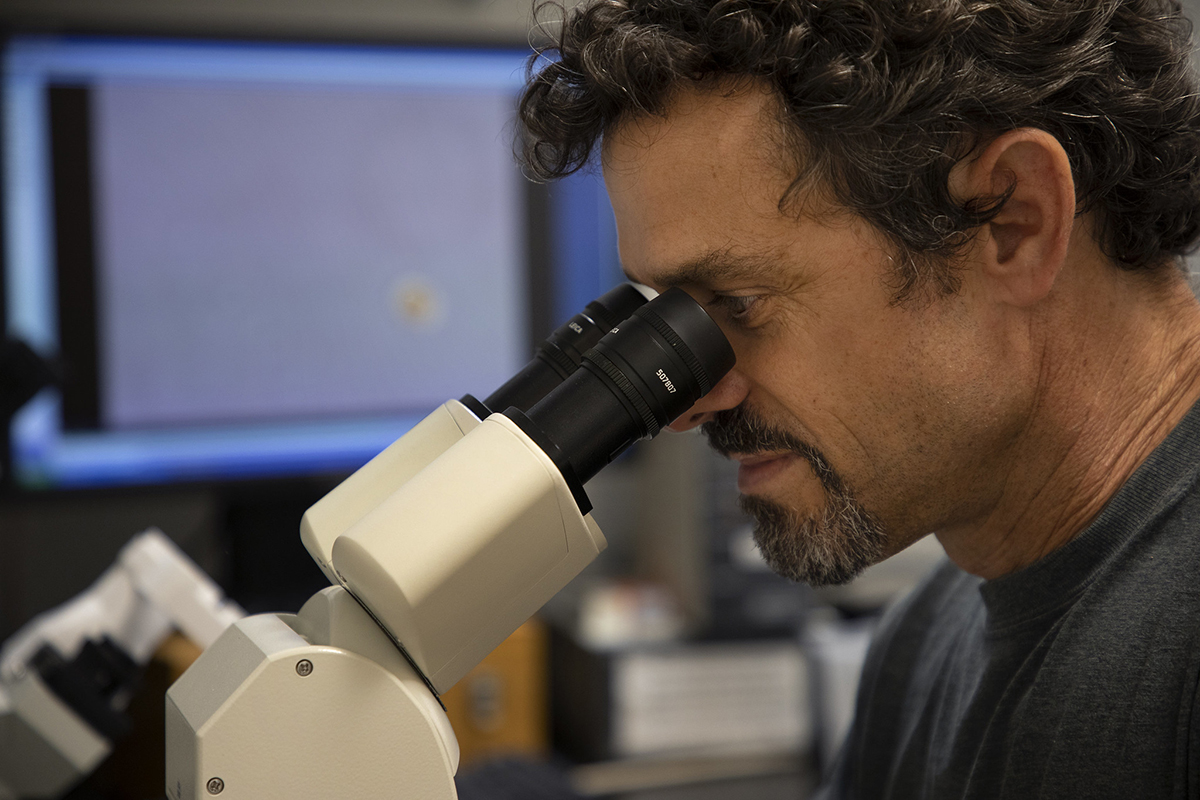
A study of the country’s two largest estuaries reveals that inshore coastal waters are not necessarily experiencing what scientists say is a worrisome global trend of increasingly acidic oceans.
The recently published paper is the latest in a small collection of studies highlighting the complexities of coastal zones onshore.
Supporter Spotlight
In this case, researchers looked at trends from data collected more than 20 years within the Neuse River Estuary-Pamlico Sound waters and Chesapeake Bay and found that things like nutrient pollution and algal blooms play a role in how carbon dioxide is dissolved in inland coastal waters.
Research Assistant Professor Nathan Hall with the University of North Carolina Chapel Hill Institute of Marine Sciences in Morehead City and co-author of the study explained that eutrophication is effectively causing, in some cases, estuarine waters to have lower acidification than that of the ocean.
Eutrophication happens in waters that become overloaded by nutrient runoff, leading to harmful algal blooms, fish kills and areas of low oxygen where aquatic life cannot survive.

“We think of ocean acidification as bad, eutrophication as bad,” Hall said. “But eutrophication also in these estuaries can prevent, at least in the surface layers, the effects of ocean acidification from showing up. So, it adds a lot of complexity in the coastal zone. It’s not just as simple as gauges going down everywhere because we’re pumping CO2 into the air. In a lot of cases estuaries, because we load them with so much organic matter and the rivers feeding into them usually have more CO2 than they can take to begin with, they usually are releasing CO2 back into the atmosphere.”
The release of that CO2 into the atmosphere means that the carbon dioxide does not often have the same influence on the pH — or measure of how acidic or basic water is — alkalinity, in an estuary.
Supporter Spotlight
The measure of pH ranges from 0-14. A measurement of 7 is neutral, those less than 7 indicate acidity and those greater than 7 indicate a base.
Scientists say increased levels of CO2 in the atmosphere driven by human activity is causing the ocean to absorb more carbon dioxide, which decreases pH, causing the ocean to become more acidic.
Increasingly acidic seas are threatening species like oysters, corals and some calcifying planktons. Threats to these species, scientists say, will create a rippling effect up the ocean food chain.
The Neuse River Estuary-Pamlico Sound and Chesapeake Bay study corroborates previous findings of how production of phytoplankton, or microalgae that float in the upper layer of fresh and marine waters, swamp out from estuaries signals that detect acidification in the ocean.
But the study also found something Hall was not expecting.
Scientists assess the amount of phytoplankton in water by measuring concentrations of chlorophyll. Phytoplankton contain chlorophyll to carry out photosynthesis by absorbing atmospheric carbon dioxide to create sugars for fuel.
“If chlorophyll is going up we assume that there’s more production,” Hall said. “And, in most cases, we think that should increase the pH as CO2 is taken out of the water from phytoplankton production. But what we actually saw in both of these estuaries is that, during the summer, periods of high chlorophyll were correlated with low pH water and that was a real headscratcher. The pH is going down during these phytoplankton blooms.”
Researchers think that, during the summer, nutrient loading that cause algal blooms also load a lot of dissolved organic carbon, which is fuel for bacteria. As the bacteria break down that organic carbon that produces CO2.
“So even though the phytoplankton are growing on the nutrients that came in from the pulses of runoff, the bacteria are growing and producing more CO2 than phytoplankton are taking the CO2 up,” Hall said. “It’s not something that I think had been seen or really shown before. It just makes things complex. The more you learn about something the more you realize, holy cow, this really is not straightforward.”
He theorizes that swamps in the watershed inundated by flooding from tropical cyclones load a lot of that organic matter into the estuary while, at the same time, dumping a lot of nutrients into the estuary that cause algal blooms.
“I think that’s fuel and the production of all the carbon dioxide that ends up making the pH go down,” he said.
This complicated system makes it challenging for researchers to provide definitive answers for how to try and manage these waters.
As Hall sees it, the study reveals eutrophication in estuaries as a kind of double-edged sword, a trade-off.
“I think that’s something that people are really just starting to talk about,” he said. “I think another thing the study shows is we have this global pressure of higher CO2 levels in the atmosphere, but how that affects pH is very estuary-specific and so we just can’t make assumptions that estuaries are going to decrease in pH. A lot of estuaries are probably not going to be really sensitive to the increase in atmospheric CO2 and some may be. We’ve really got to take it by an estuary-to-estuary basis to really understand which ones are going to be more sensitive and which ones are not.”








